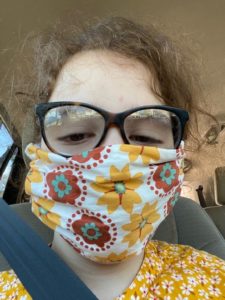Academy-Award Winning Actor Marlee Matlin & Easterseals to Headline The Marketing Power of Disability Conference Presented by PRWeek
by Angela F. Williams

After more than a year of navigating life through the pandemic, this fact is now only magnified. As we noted in our recent study about the impact of COVID-19, working-age adults with disabilities report far greater levels of unemployment than in prior years, with more than one million losing their jobs within the first few months of the pandemic. These study findings also show we must act now to change the landscape for people with disabilities to assure greater equity and inclusion for them in the post-pandemic world.
This means advancing equity for all in our communities. To do so, we must increase employment opportunities by helping people with disabilities, older workers, and veterans find and hold meaningful jobs.
Fortunately, the pursuit of a diverse, equitable and inclusive workforce has never been more top of mind than it is now. As a powerful advocate for people with disabilities and their families, Easterseals is working to ensure that disability is included within DE&I conversations happening with employers nationwide. No such conversations or considerations are even remotely complete without including people with disabilities.
As we’re beginning to recover from this past year, our country must now place far greater value on adults with disabilities in the workforce. Yes, it is the right thing to do. And yes, there is an undeniable business case to be made.
A recent study by the American Institutes for Research (AIR) indicates that working-age people with disabilities have approximately $21 billion in discretionary income. This money is waiting on the table, ready for the taking by the brands who get it right.
As consumers, we rarely see disability included in the advertisements, corporate storytelling, or brand messages across our screens or in stores. But for those companies who authentically include disability – in product offerings and design, hiring practices and advertising campaigns – consumers pay attention with their pocketbooks. Companies who embrace disability will be the first to say that these inclusive decisions make for smart business, increasing the bottom line and improving customer loyalty.
Are you curious about this topic? Want to explore it more? I certainly do!
Plan to join Easterseals and Marlee Matlin, Academy-Award Winning actor and disability advocate, alongside PRWeek for an incredible conversation on Tuesday, June 1 – The Marketing Power of Disability. Learn more here.
During this special virtual event, we will drill deeply into how the communications industry – and all the brands it counsels – can more effectively include this extensive population through content and campaigns, but also tap into this incredible pool of talent to bolster corporate DE&I efforts.
AGENDA
· 12:02pm ET-12:30pm ET: Fighting Fears, Suppressing Stigmas
· 12:32pm ET-12:58pm ET: A workplace that works for everyone
· 1pm ET-1:30pm ET: Featured chat with Marlee Matlin
· 1:32pm ET-1:58pm ET: The keys to inclusive content
FEATURING
· Marlee Matlin, Academy Award-winning actress and advocate
· Angela F. Williams, president and CEO, Easterseals
· More speakers to be announced…









 I just got word that the U.S. Department of Justice has
I just got word that the U.S. Department of Justice has 



